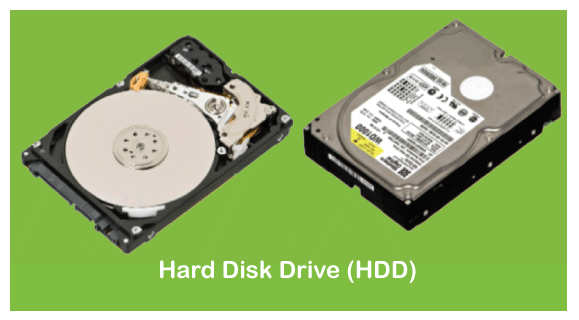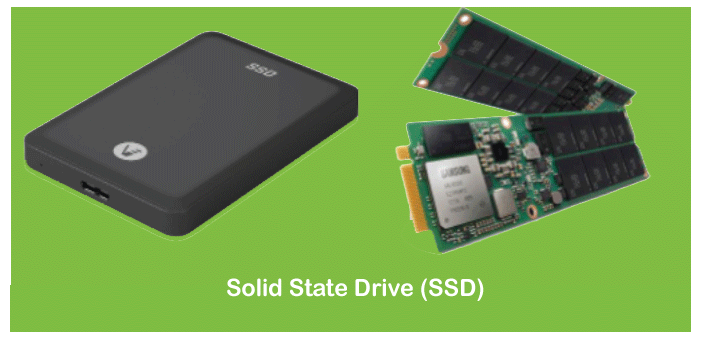Difference Between SSD and HDDSSD and HDD are similar in their physical structure and specification; however, they follow different mechanisms to store the data. There are advantages and disadvantages of both these drives, and choosing the right one depends on the user's requirements and budget. We are discussing significant differences between SSD and HDD in this article, which helps decide which one is superior to use in this modern era. Let's first understand both with the definitions: HDD (Hard Disk Drive)A hard disk drive is a non-volatile data storage device. The term non-volatile refers to storage that can store the data even when the power source is disconnected or turned off. An HDD contains mechanical platters and a moving head to read and write data. The head is usually attached with a small motor that helps spin the platters and move the header's arms. Each platter is organized into several concentric circles, known as tracks. These tracks are further segregated into multiple logical units, known as sectors. Each track and sector number concludes a unique address that helps locate and access the data. The data is stored in the nearest available space. In most HDDs, the platters spin at a speed of 5400 RPM (revolutions per minute). The higher the number of RPM, the faster a hard drive will be to access data. 
SSD (Solid State Drive)SSD or Solid State Drive is a newer, faster non-volatile storage device. Unlike HDD, SSD does not include moving parts like platters, head, or arms. It uses integrated circuits to store and retrieve the data instantly. These ICs are coupled on an interconnected flash-memory chip (often dubbed as 'NAND') to achieve superior performance and durability. Without the moving components, SSD runs cooler and consumes less energy. This helps increase the battery life for laptops and other SSD-based devices. The mechanism used in SSDs is similar to large USB drives; however, USB drives use a different kind of flash chips. That's the reason SSDs are expensive as compared to USB flash drives. The technology used in these storage devices is a NAND, a kind of flash memory. They include floating gate transistors that record a charge to store data at the lowest level. These gates are maintained in a grid style, which further turned into a block. Each row that helps organize gates as a grid pattern is known as a page. The data is stored in these organized blocks. 
Key Differences between SSD and HDDFew key differences between SSD and HDD are listed below:
Major Differences between SSD and HDDThe other significant differences between solid-state drives and hard disk drives can be explained in a tabulated form, as below:
Which one should we choose?As we said above, selecting the right storage is based on the user's requirements and budget. SSD can be best suited for those who cannot compromise with the performance, no matter how much they have to pay. Besides, HDD is the choice of those people who have basic tasks-processing requirements and want to get their system ready in the least possible budget. However, the best possible way for balanced performance in a budget is to use both SSD and HDD. A computer system in today's technological era can work with both the storage simultaneously. Therefore, a low-capacity SSD having OS installed in it will work better with a traditional HDD. SSD can only be used for the software, whereas the user's data (like images, audio, video, documents, etc.) can be stored in an HDD. This will help system software and activities run faster and provide optimum performance.
Next TopicIntroduction to Computer
|
 For Videos Join Our Youtube Channel: Join Now
For Videos Join Our Youtube Channel: Join Now
Feedback
- Send your Feedback to [email protected]
Help Others, Please Share










